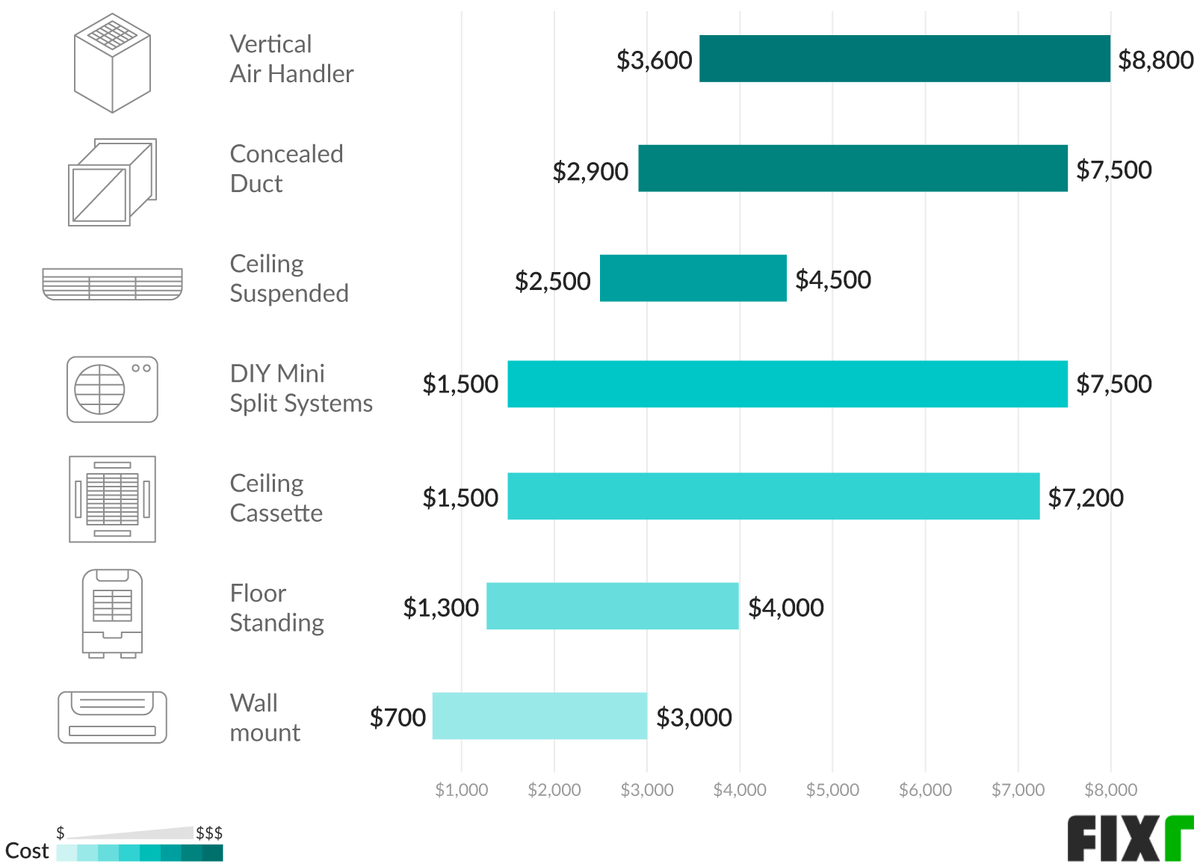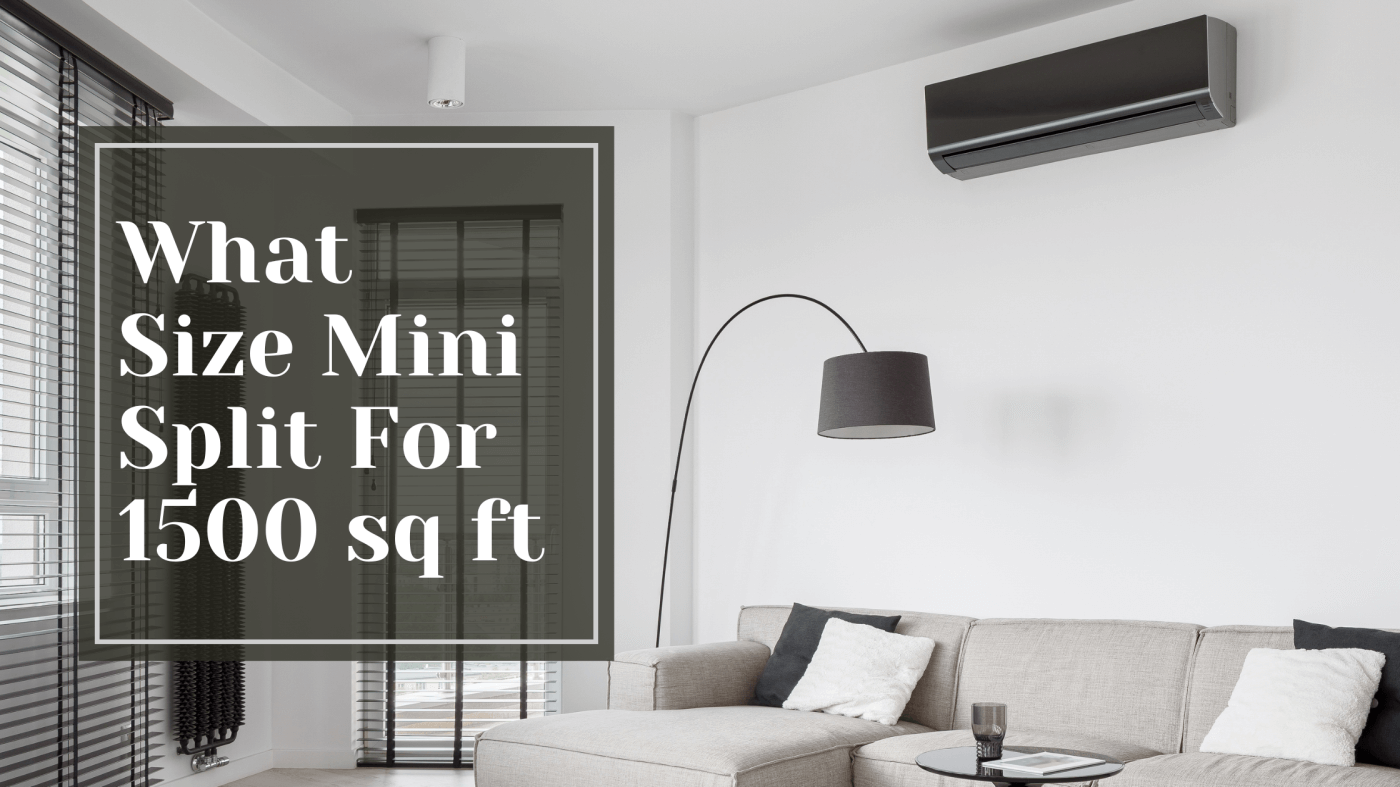Cost Of Mini Split System For 1000 Sq Ft

Mini-Split Systems for 1000 Sq Ft: A Comprehensive Cost and Buying Guide
Mini-split systems, also known as ductless mini-splits, are an increasingly popular heating and cooling solution for homeowners, real estate investors, and contractors alike. Their versatility, energy efficiency, and relatively easy installation make them a compelling alternative to traditional central HVAC systems, especially for spaces like additions, converted garages, or homes without existing ductwork. This guide will focus specifically on the cost of installing a mini-split system for a 1000 sq ft space, covering everything from initial purchase price to long-term operating expenses.
Understanding Mini-Split Systems
Before diving into the costs, let’s clarify what a mini-split system is. A mini-split consists of two main components: an outdoor unit (containing the compressor and condenser) and one or more indoor units (air handlers). These units are connected by refrigerant lines and electrical wiring through a small hole in the wall. Unlike central systems that rely on ductwork to distribute air, mini-splits deliver conditioned air directly into the room.
Factors Influencing the Cost of a Mini-Split System for 1000 Sq Ft
Several factors contribute to the overall cost of installing a mini-split system in a 1000 sq ft space:
- Number of Zones: A 1000 sq ft area could potentially be served by a single-zone system (one outdoor unit and one indoor unit) or a multi-zone system (one outdoor unit and multiple indoor units for different rooms). Multi-zone systems will naturally be more expensive.
- BTU (British Thermal Units) Rating: BTU measures the cooling and heating capacity of the system. A system that's too small won't effectively condition the space, while one that's too large will cycle on and off frequently, leading to energy waste and discomfort. For 1000 sq ft, a system with 18,000 to 24,000 BTU is generally recommended, but this can vary based on climate, insulation, and window size.
- Energy Efficiency Ratings: The SEER (Seasonal Energy Efficiency Ratio) rating measures cooling efficiency, while the HSPF (Heating Seasonal Performance Factor) rating measures heating efficiency (for heat pump models). Higher SEER and HSPF ratings translate to lower energy bills but usually come with a higher upfront cost. The AFUE (Annual Fuel Utilization Efficiency) applies to furnaces but not mini-splits using heat pump technology.
- Brand and Model: Different brands and models offer varying features, performance, and price points. Well-known brands like Mitsubishi, Daikin, and LG often command a premium due to their reputation for reliability and advanced technology.
- Installation Costs: Labor costs can vary significantly depending on your location, the complexity of the installation (e.g., running refrigerant lines through walls), and the contractor you choose.
- Features: Advanced features such as smart controls, air purification systems, and enhanced dehumidification can add to the overall cost.
Cost Breakdown: Purchase and Installation
Here's a general breakdown of the estimated costs:
- Single-Zone Mini-Split System (18,000 - 24,000 BTU):
- Unit Price: $1,500 - $4,000 (depending on brand, SEER/HSPF rating, and features)
- Installation Costs: $500 - $1,500 (depending on complexity and location)
- Total Estimated Cost: $2,000 - $5,500
- Multi-Zone Mini-Split System (Serving Multiple Rooms Within 1000 Sq Ft):
- Unit Price (Outdoor Unit): $2,500 - $6,000
- Unit Price (Each Indoor Unit): $800 - $2,000
- Installation Costs: $800 - $2,500 (higher due to multiple units and longer refrigerant lines)
- Total Estimated Cost: $4,100 - $10,500+ (depending on the number of zones and the complexity of the installation)
Important Note: These are just estimates. It's crucial to get quotes from multiple qualified HVAC contractors in your area for an accurate assessment of your specific needs and installation costs.
Popular Mini-Split Brands and Models
Here's a brief overview of some popular mini-split brands and models, along with their key features:
- Mitsubishi Electric: Known for their reliability, quiet operation, and advanced features. The Mitsubishi Mr. Slim series is a popular choice. Look for models with high SEER and HSPF ratings for optimal energy savings.
- Daikin: Daikin is another leading manufacturer with a wide range of mini-split systems. Their Daikin Aurora series is designed for cold climates and offers excellent heating performance.
- LG: LG offers a variety of stylish and feature-rich mini-splits. The LG Art Cool Gallery is known for its aesthetic appeal, allowing you to display artwork on the indoor unit.
- Fujitsu: Fujitsu is a reputable brand offering efficient and reliable mini-split systems.
- Gree: Gree is becoming increasingly popular as a more budget-friendly option without sacrificing too much in terms of performance.
When comparing models, pay attention to the following:
- SEER and HSPF Ratings: Aim for a SEER rating of at least 16 and an HSPF rating of at least 9 for good energy efficiency. Many models exceed these ratings.
- Noise Levels: Look for units with low noise levels, especially for bedrooms or living areas.
- Smart Features: Consider models with Wi-Fi connectivity and smartphone app control for convenient remote operation.
- Air Filtration: Some units offer advanced air filtration systems that can remove allergens and pollutants from the air.
Long-Term Costs: Energy Consumption and Maintenance
While the initial cost is a significant factor, it's essential to consider the long-term costs associated with owning a mini-split system:
- Energy Consumption: Mini-splits are generally more energy-efficient than traditional window AC units or electric baseboard heaters. However, energy consumption will depend on the size of the unit, your climate, your usage habits, and the energy efficiency of the model you choose. A higher SEER and HSPF rating will directly translate to lower energy bills.
- Maintenance: Regular maintenance is crucial for ensuring the longevity and efficiency of your mini-split system. This includes:
- Cleaning the air filters every 1-3 months.
- Cleaning the indoor and outdoor unit coils annually.
- Inspecting the refrigerant lines for leaks.
- Repairs: Like any mechanical system, mini-splits can require repairs over time. The cost of repairs will vary depending on the problem and the availability of parts. Choosing a reputable brand with a good warranty can help minimize repair costs.
Warranties
Pay close attention to the warranty offered by the manufacturer. Most mini-split systems come with a standard warranty that covers parts and labor for a certain period (usually 5-7 years for the compressor and 1-5 years for other parts). Some manufacturers offer extended warranties for an additional cost. Always read the fine print of the warranty to understand what is covered and what is not. Proper installation is almost always required to validate the warranty.
Pros and Cons of Mini-Split Systems
To help you make an informed decision, here's a summary of the pros and cons of mini-split systems:
Pros:
- Energy Efficiency: Higher SEER and HSPF ratings can lead to significant energy savings.
- Zoned Cooling and Heating: Allows you to control the temperature in individual rooms or zones.
- Easy Installation: Relatively easy to install compared to central HVAC systems, especially in homes without existing ductwork.
- Quiet Operation: Generally quieter than window AC units or central HVAC systems.
- Versatility: Can be used for both heating and cooling.
Cons:
- Initial Cost: Can be more expensive than window AC units or electric baseboard heaters.
- Aesthetics: The indoor units may not be as aesthetically pleasing as some other heating and cooling options.
- Installation Costs: Installation costs can vary depending on the complexity of the project.
- Refrigerant Leaks: Like any system that uses refrigerant, there is a risk of leaks.
Making the Right Choice
Choosing the right mini-split system for your 1000 sq ft space requires careful consideration of your needs, budget, and local climate. By understanding the factors that influence the cost, comparing different brands and models, and considering the long-term operating expenses, you can make an informed decision that will provide you with years of comfortable and efficient heating and cooling. Obtain quotes from multiple qualified HVAC contractors to ensure accurate pricing and professional installation. A well-chosen and properly installed mini-split system can be a valuable investment in your home's comfort and energy efficiency.










